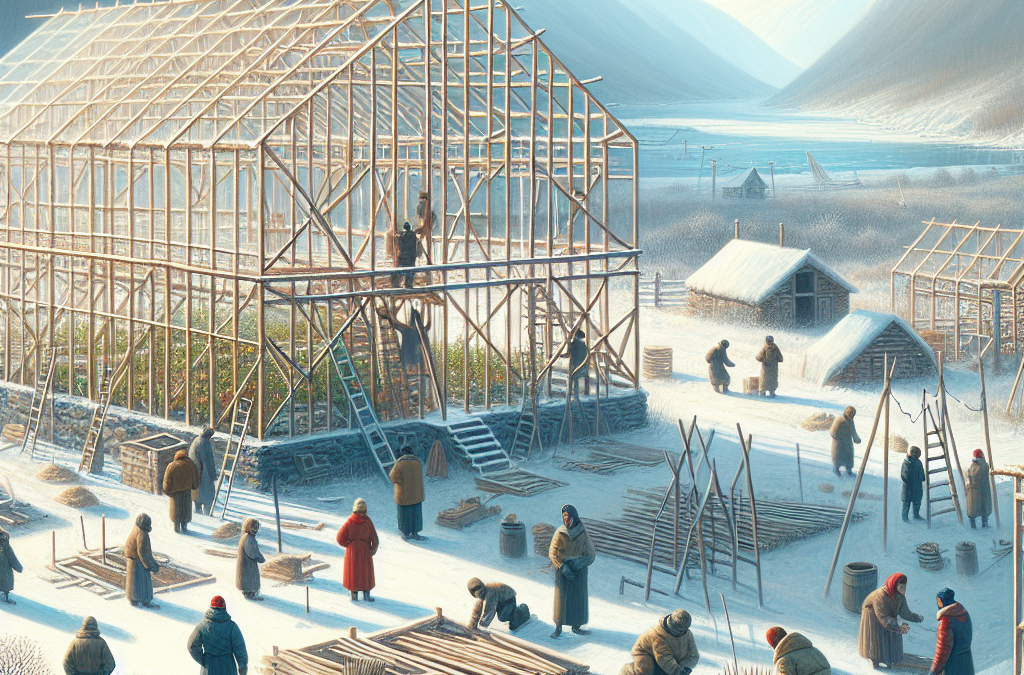Choosing the Right Location for Your Greenhouse
Evaluating Sunlight Availability
When it comes to building a greenhouse in a cold climate, the first thing I always emphasize is the importance of sunlight. Finding a spot that gets ample sunlight can significantly impact how well your plants will grow. You’ll want to note the sun’s path throughout the day and determine which areas receive direct sunlight. Trust me, this can make all the difference!
Ideally, you want your greenhouse to face south to capture maximum sunlight. On those cold, dreary winter days, a south-facing greenhouse will soak up every ray of sun that comes its way. Performing a little sun tracking can be a fun project; I’ve even marked out areas with string for clarity!
In addition, make sure the site is somewhat sheltered from harsh winds. If you live in an area with biting winter winds, consider positioning your greenhouse near a natural windbreak, like trees or buildings. This setup helps keep your greenhouse warmer without extra energy consumption.
Choosing the Right Materials
Understanding Structure Materials
Now, onto materials! When I built my first greenhouse, I quickly realized that the structure’s durability is key, especially in a cold climate. You want to start off with sturdy framing materials—wood, metal, or PVC can work well, depending on your budget and aesthetic preferences.
Wood gives a really rustic look, while metal can be much more durable and resistant to the elements. Just keep in mind that if you go with wood, using treated lumber is a must for longevity. I learned that the hard way when my untreated wood started to rot quicker than I expected!
Then we have glazing materials. Polycarbonate panels are my favorite because they provide excellent insulation, protecting plants against those frosty nights. Some people opt for glass, which looks gorgeous but often doesn’t offer the same temperature control. My recommendation? Go polycarbonate for a lovely balance of durability and light management!
Insulation Techniques for Cold Climates
Utilizing Double Layer Glazing
Insulating your greenhouse is paramount if you want to grow plants all year round in a cold climate. One effective method is using double-layer glazing. This technique not only maximizes sunlight but creates an air pocket that helps trap heat. I can’t stress enough how much of a game-changer this was for me during frigid winters!
Installing insulating materials is definitely worth the investment. I remember my first winter being tough because I didn’t insulate properly. My plants suffered from the chill; now I can grow greens and tomatoes even when snow blankets the ground!
Also, consider adding extra insulation in areas that may be drafty or exposed to extreme cold. A simple bubble wrap layer, applied inside the greenhouse, can make all the difference without breaking the bank.
Heating Options for Your Greenhouse
Passive vs. Active Heating
When it’s time to talk about heating, you’ll find there are various options—the choice between passive and active heating methods is a personal one. I learned that passive solar heating can work wonders if you design well. This means using thermal mass, like water barrels, to retain heat during the day and release it at night.
On the flip side, if you want more control over temperatures, active heating systems like electric heaters or propane heaters are the way to go. I cringe at the electricity bill every month during winter, but let me tell you, my delicate seedlings are totally worth it!
Whichever method you choose, don’t forget to have a temperature monitoring system. I’ve got a little wireless thermometer that keeps me updated, so I can make sure my plants are cozy and happy while I sip on my coffee.
Growing Techniques for Cold Weather
Choosing the Right Crops
In cold climates, the secret to thriving in your greenhouse is selecting the right crops. I’ve experimented with a variety of vegetables and herbs, and trust me—some do better than others. Green leafy vegetables, like kale and spinach, can thrive in cooler temperatures, making them perfect candidates for winter gardening.
You won’t want to forget about root vegetables, either. Carrots and radishes can be sown early in the season and can tolerate a fair bit of chill. However, if you’re looking to grow tomatoes or peppers, make sure your heating is on point as they love a warmer climate.
Also, don’t forget about companion planting! I’ve often paired crops to help deter pests naturally and maximize space. That little bit of planning can turn your greenhouse into a more productive and healthier growing environment!
Frequently Asked Questions
1. What type of greenhouse is best for cold climates?
A greenhouse with sturdy construction, double-layer glazing, and proper insulation materials is best for cold climates. Materials like polycarbonate can help maintain warmth while maximizing sunlight.
2. How can I keep my greenhouse warm during winter?
Utilizing passive solar techniques like thermal mass, combined with additional heating systems such as heaters or heat mats, can help regulate temperature effectively in a cold climate greenhouse.
3. What crops grow best in a winter greenhouse?
Leafy greens such as kale and spinach, as well as root vegetables like carrots, can thrive in cooler temperatures. Selecting cold-tolerant varieties is key for successful winter gardening.
4. Should I use glass or plastic for my greenhouse?
While both have their pros, I personally recommend plastic, particularly polycarbonate, because it provides better insulation and is less prone to breaking, making it ideal for harsher climates.
5. How do I prevent pests in my greenhouse during the winter?
Regularly check your plants for signs of pests, and consider using companion planting or natural pest deterrents. Keeping a clean environment and regularly monitoring your plants helps to reduce pest problems.





